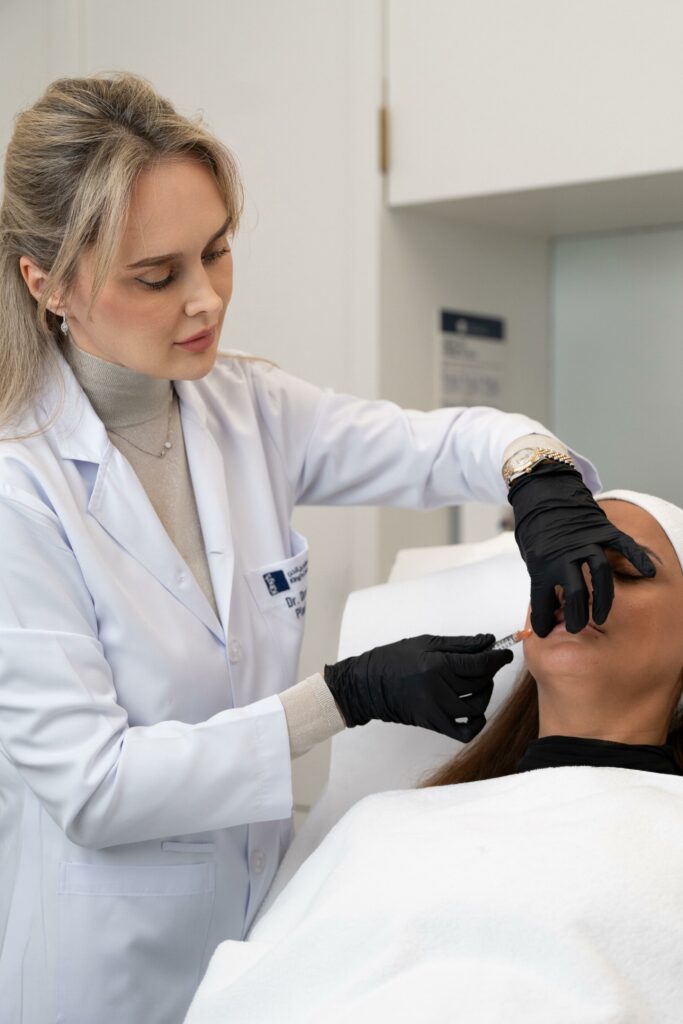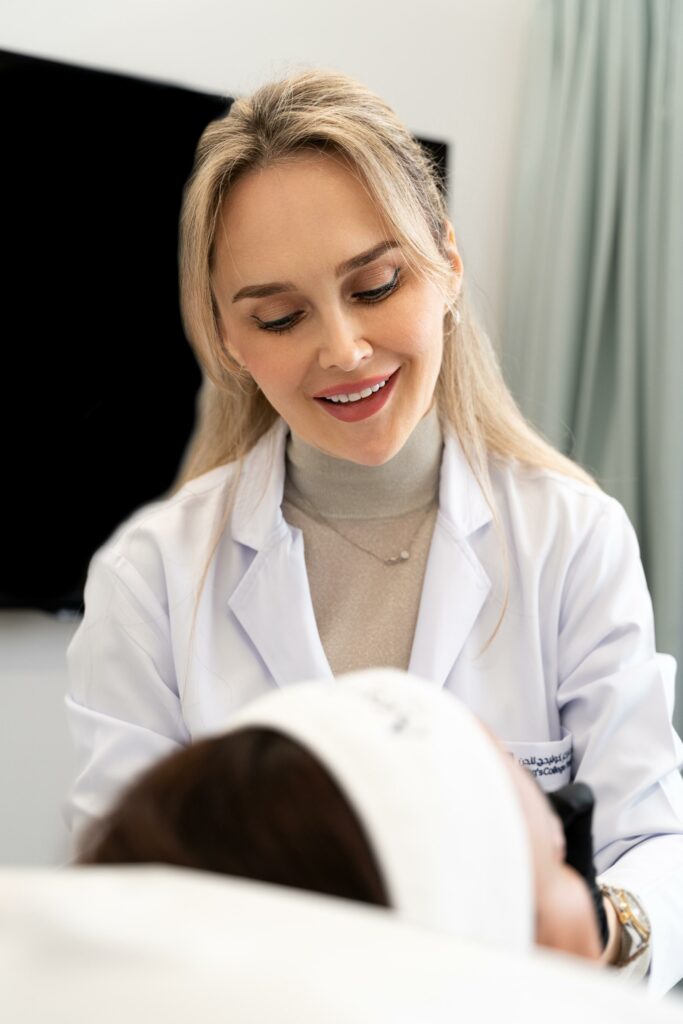
Story by Editor-at-Large CAROLINA OGLIARO
The Ethics of Beauty: Dr. Dragana Spica on How Aesthetic Surgery Is Shaping Our Perception of Perfection
In today’s world, plastic surgery and aesthetic medicine have transcended their traditional roles as tools for physical transformation, becoming integral to self-confidence, self-expression, and overall well-being. With technological advancements and a growing emphasis on individuality, these fields focus on achieving natural, personalized results that enhance unique features rather than conforming to a one-size-fits-all standard of beauty. From non-invasive treatments to complex surgeries, modern aesthetic practices strive to empower individuals by aligning their outward appearance with their inner sense of self.
However, this evolution has also brought new challenges. In an era dominated by social media filters and heavily edited images, the line between aspiration and unrealistic expectations has become increasingly blurred. The pursuit of perfection, often influenced by fleeting trends and digital ideals, raises critical questions about self-acceptance, mental health, and the ethical responsibilities of practitioners.
As aesthetic medicine continues to grow in popularity, it invites an important conversation about balancing self-improvement with authenticity, fostering a deeper understanding of how these procedures can enhance not just appearances but lives. This dialogue is crucial in navigating the complex interplay of beauty, identity, and self-worth in a society increasingly shaped by external validation.
Dr. Dragana Spica, a plastic surgeon in Dubai, stands at the forefront of a critical dialogue in modern medicine: the intersection of plastic surgery, aesthetic medicine, and the pursuit of self-acceptance. Renowned for her ethical approach and commitment to redefining beauty standards, Dr. Spica delves into the complexities of a world increasingly influenced by social media filters and unrealistic ideals. With years of experience in the field, Dr. Spica combines medical precision with a deep understanding of the psychological and emotional aspects of aesthetic transformations. She is passionate about guiding patients toward harmonious and natural results that enhance their unique features rather than conforming to societal beauty standards. Dr. Spica is also a vocal advocate against the misuse of aesthetic procedures and the unrealistic ideals perpetuated by social media, striving to educate both patients and professionals on the importance of a balanced, mindful approach to beauty and well-being.
In this compelling interview, she confronts the pressing issues surrounding the misuse of aesthetic procedures, the psychological impact of chasing perfection, and the role of medical professionals in promoting healthy, balanced self-perception. Prepare to gain unique insights into how medicine can empower individuals to embrace their authentic selves while fostering a deeper understanding of true beauty.
SECTION 1: The Landscape of Aesthetic Medicine and Its Challenges
1. Dr. Spica, could you share your perspective on how the field of aesthetic medicine has evolved in the past decade?
The approach to aesthetic medicine has evolved significantly, with a growing emphasis on the principle that “less is more.” Patients now increasingly seek to enhance their natural beauty rather than pursuing extreme alterations. The focus is on achieving subtle improvements that preserve and enhance one’s inherent features, rather than overdoing procedures that may lead to an unnatural look.
2. In your practice, what are the most common misconceptions patients have about aesthetic procedures?
One of the most prevalent misconceptions is that aesthetic procedures, whether surgical or non-surgical, are permanent. All procedures, even the most advanced, have a time frame for effectiveness and require maintenance over time to preserve the desired results.
3. With the rise of social media, have you observed an increase in requests for treatments inspired by unrealistic beauty standards?
Not anymore. While social media was once a powerful influence, encouraging the pursuit of unrealistic beauty ideals, I have noticed that patients are becoming more informed and discerning. There is a shift toward more realistic expectations, as people are beginning to understand the limitations of what aesthetic procedures can achieve.
4. What role do filters and photoshopped images play in shaping patients’ expectations?
Filters and photoshopped images can certainly contribute to skewed perceptions of beauty. Patients frequently ask whether photos of celebrities are real or digitally altered, which reflects the growing confusion between reality and the digital ideal. As practitioners, it’s essential to manage these expectations and educate patients about the differences between digitally altered images and the natural results that aesthetic medicine can achieve.
SECTION 2: The Abuse of Aesthetic Medicine
6. What are the signs that someone might be abusing plastic surgery or aesthetic medicine?
Signs of abuse in aesthetic medicine typically involve patients who overdo procedures in an attempt to achieve unrealistic or exaggerated results. This is often fueled by dissatisfaction with minor imperfections, which can spiral into a continuous cycle of procedures.
7. How do you address patients who come to you seeking procedures they don’t genuinely need?
It is vital to provide patients with comprehensive information, highlighting not only the benefits but also the potential side effects of each procedure. By offering full transparency, I help patients make informed decisions that are in their best interest, rather than simply fulfilling their immediate desires.
8. Have you encountered cases where patients regret multiple procedures, and how do you help them in such situations?
Yes, I have. In these cases, I emphasize the importance of knowing when to stop. I educate patients on the irreversible nature of some procedures and explain that additional treatments may not yield the desired outcome. It’s critical to instill a sense of balance and understanding, encouraging patients to make thoughtful choices for their long-term well-being.
9. What role does the lack of regulation or oversight in some areas play in exacerbating the abuse of aesthetic medicine?
To address this issue, it’s essential that only highly educated, skilled, and ethically responsible doctors perform aesthetic procedures. Practitioners must ensure they provide honest advice and adhere to a strong ethical code. Without proper regulation and oversight, there is a risk of patients being misled by unqualified professionals, which can lead to adverse outcomes.
SECTION 3: The Influence of Unrealistic Perfection
11. From your experience, how deeply rooted is the link between the rise of social media and the unrealistic quest for perfection?
The link between social media and the pursuit of unrealistic perfection is deeply rooted. Platforms like Instagram and TikTok often portray an idealized version of beauty, which can distort how people perceive themselves. However, there is growing recognition of the psychological impact this has on mental health, and we are seeing a shift toward more realistic standards of beauty.
12. Do you think the constant exposure to altered images on social media impacts the mental health of younger generations?
Absolutely, it has a profound impact. The constant exposure to digitally altered images on social media can create unrealistic expectations and contribute to anxiety, depression, and body dysmorphia among younger individuals. It’s crucial that we promote self-acceptance and educate the younger generation about the importance of authenticity.
13. What advice would you give to individuals who feel pressured to undergo aesthetic procedures to “fit in” online?
My advice is simple yet powerful: be yourself. Embrace your natural beauty and remember that true confidence comes from within, not from external validation or online approval. Social media trends come and go, but authentic beauty is timeless.
14. How can society shift the narrative from “perfect beauty” to “authentic beauty”?
To shift the narrative, we need to focus on celebrating individuality. Beauty comes in many forms, and by embracing diverse standards of beauty, we can move away from unrealistic ideals. Less is more, by promoting natural, minimal enhancements, we can redefine beauty standards and encourage self-love.
15. What steps can aesthetic medicine professionals take to combat the unhealthy pursuit of perfection?
Aesthetic professionals must actively support mental health and wellness by guiding patients toward realistic goals. It’s essential to foster an open dialogue, where patients feel comfortable discussing their emotional and psychological motivations behind pursuing certain procedures.
SECTION 4: Solutions and Education
16. What criteria should individuals consider when choosing a qualified and ethical practitioner?
When choosing a practitioner, patients should focus on the doctor’s experience, their level of education, and their commitment to providing honest and realistic advice. Transparency, empathy, and a patient-centered approach are alsocritical factors in making an informed decision.
17. Can you share examples of initiatives or campaigns that effectively educate the public on the risks of unqualified practitioners?
One effective educational approach involves showcasing real examples of overdone procedures and the complications that can arise. By highlighting these cases, we can help the public understand the potential risks associated with choosing unqualified practitioners and encourage them to make safer decisions.
18. How do you think the industry could better regulate and penalize unprofessional or unethical practices?
There should be stringent penalties for unethical practices, including the revocation of a practitioner’s professional license. Stronger regulatory measures will help ensure that only qualified and ethical professionals provide aesthetic services, safeguarding patient health and well-being.
19. What are the long-term consequences for individuals who undergo procedures with unqualified doctors or in unsanitary conditions?
The long-term consequences are far-reaching. Patients may experience complications or unsatisfactory results, which can not only affect their appearance but also lead to psychological distress. The lack of trust in the industry could cause many individuals to avoid aesthetic treatments altogether.
20. Are there treatments that are currently more popular? Which ones are most requested by your patients, and why?
Botox remains one of the most popular treatments, primarily because it is non-invasive and effective in reducing wrinkles. Patients appreciate the quick results and minimal downtime that Botox provides.
21. Dr. Spica, in your career, have you ever refused to perform a treatment on a patient because you deemed it inappropriate or risky? Could you share a specific example?
Yes, there have been several instances where I’ve refused to perform certain procedures. For example, I had a patient with a flat stomach who still wanted a tummy tuck. I explained that it was unnecessary and that the procedure would not produce the desired results. It’s crucial to assess each patient holistically and provide appropriate, ethical care.
22. How do you navigate the delicate balance between fulfilling a patient’s wishes and protecting them from making decisions they may regret later?
I always take the time to discuss the advantages and disadvantages of any procedure with my patients. By ensuring they fully understand both the short-term and long-term implications, I help them make informed choices that align with their true needs and expectations.
23. With the average age for beginning aesthetic treatments significantly lowering, what do you think are the key factors contributing to this trend?
The influence of social media is one of the primary factors driving younger individuals to seek aesthetic treatments. The pressure to conform to online beauty standards has led to an increase in younger patients opting for non-surgical procedures to enhance their appearance.
24. How do you approach consultations with younger patients who may not fully understand the long-term implications of aesthetic procedures?
I start by asking the patient’s reasons for wanting the procedure. I explore whether their decision is based on social media influence, family or friends’ opinions, or if there is a deeper emotional need. This helps guide them toward making thoughtful, informed decisions.
25. Finally, Dr. Spica, what is your vision for the future of aesthetic medicine in balancing innovation with ethical responsibility?
I envision a future where aesthetic medicine continues to innovate, focusing on less invasive techniques that provide natural, subtle results. As the field progresses, ethical responsibility must remain at the core of practice, ensuring that every patient’s safety and well-being are prioritized above all.
___
In an era dominated by filters, Photoshop, and ever-shifting beauty trends, the pursuit of perfection often overshadows the essence of authenticity. Dr. Dragana Spica has illuminated a path forward, one where aesthetic medicine becomes a tool for empowerment rather than an escape from insecurity.
The real challenge lies not in reshaping our features but in reshaping our mindset: how do we balance the desire to enhance with the imperative to accept?
This dialogue is not just about beauty but about redefining our relationship with self-worth in a world that demands flawlessness. Perhaps the question we should all ask ourselves isn’t ‘What should I change?’ but rather, ‘Why do I feel the need to?’ The answer might just transform not only our reflections but also our lives.








